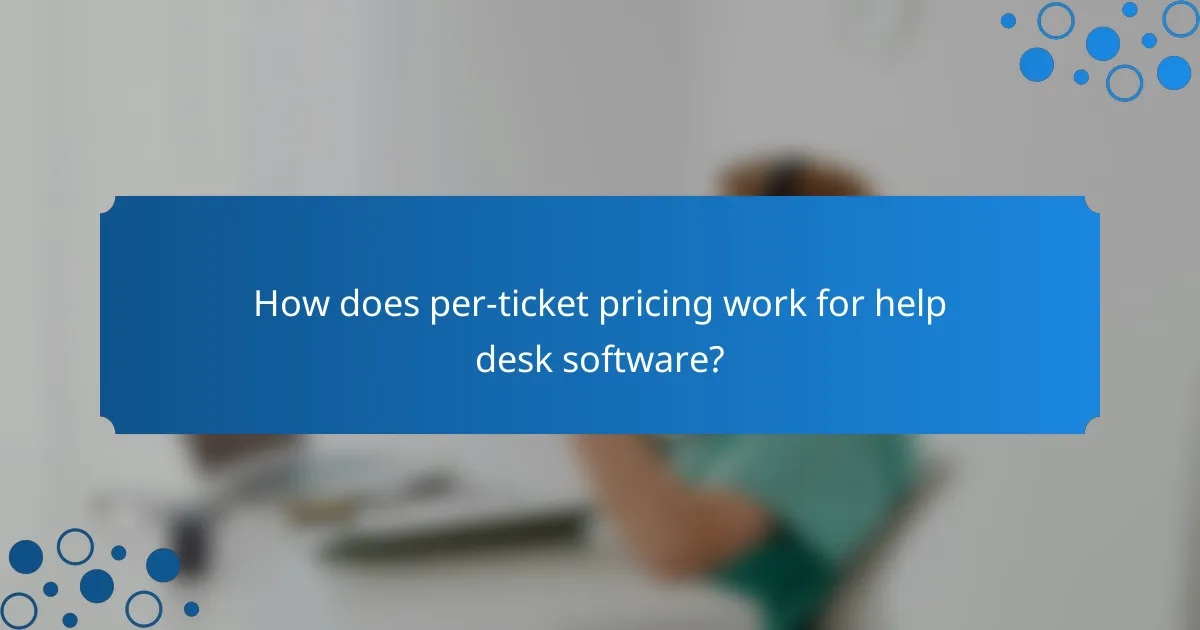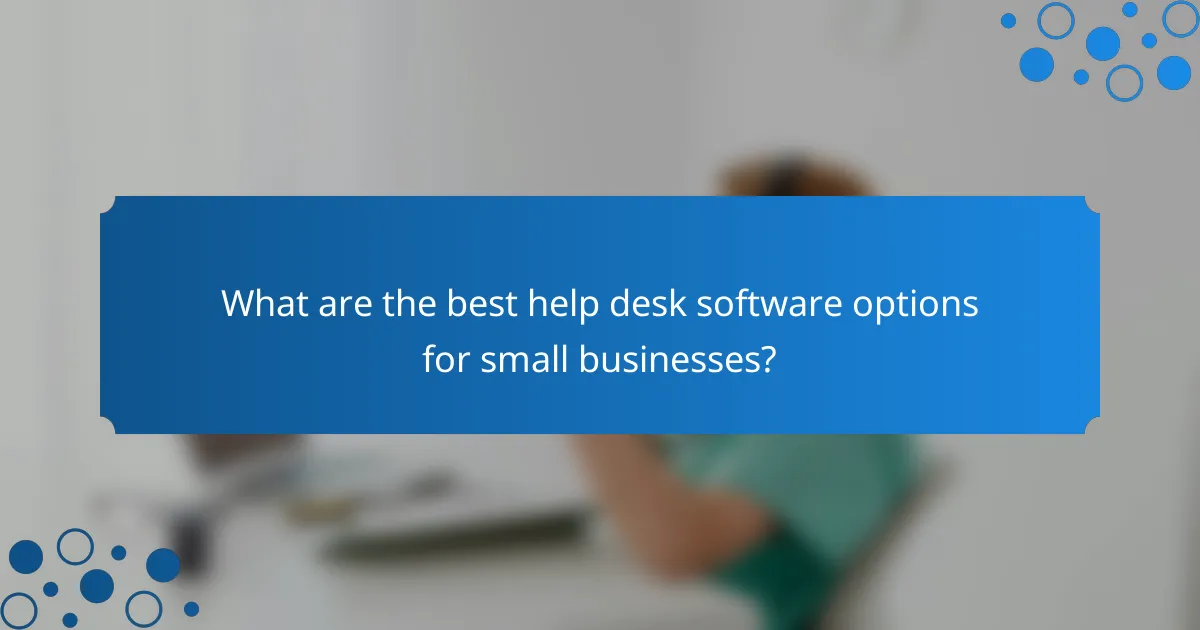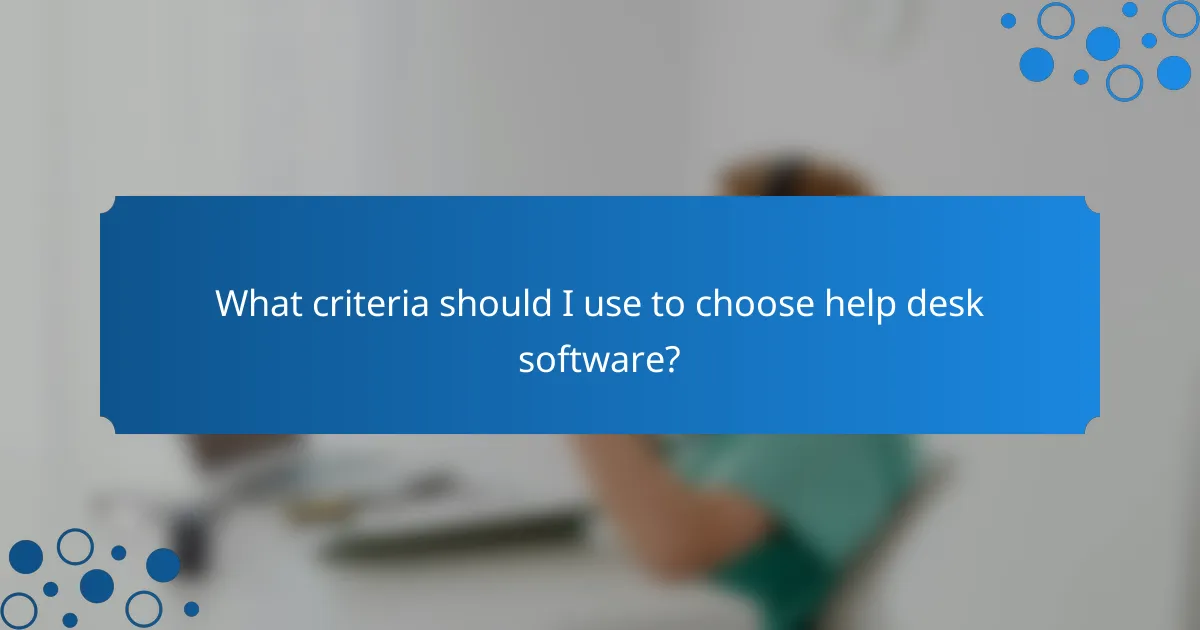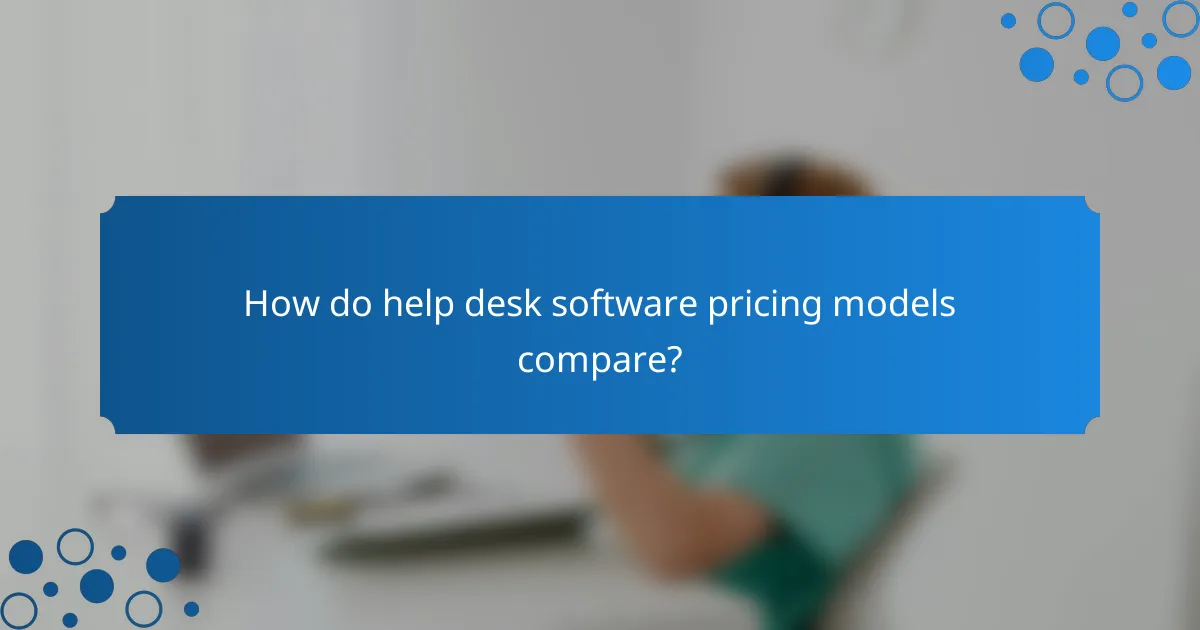Help desk software in New Zealand typically charges monthly fees ranging from NZD 30 to NZD 150 per agent, influenced by the features and service levels provided. For businesses with fluctuating support needs, per-ticket pricing can offer a more economical solution, allowing payment based on the actual number of support tickets processed. However, it’s essential to evaluate any feature limitations, as they can significantly impact ticket management, reporting, and integration with other tools, ultimately affecting your team’s efficiency.

What are the monthly fees for help desk software in New Zealand?
The monthly fees for help desk software in New Zealand typically range from NZD 30 to NZD 150 per agent, depending on the features and service levels offered. Some providers may also offer per-ticket pricing models, which can be more cost-effective for businesses with variable support needs.
Average monthly costs
On average, businesses in New Zealand can expect to pay between NZD 50 and NZD 100 per user for standard help desk software. Basic plans usually include essential features like ticket management and reporting, while more advanced plans with automation and integrations can cost upwards of NZD 100 per user monthly.
For companies with fluctuating support demands, per-ticket pricing can be a viable alternative, often costing around NZD 1 to NZD 5 per ticket, depending on the provider and volume of tickets processed.
Popular providers and their pricing
Some popular help desk software providers in New Zealand include Zendesk, Freshdesk, and Jira Service Management. Zendesk’s pricing starts at approximately NZD 50 per agent per month for basic features, while Freshdesk offers a free tier for small teams and paid plans starting around NZD 25 per agent.
Jira Service Management typically charges around NZD 40 per agent for its standard plan, which includes IT service management features. It’s advisable to compare the features offered at each pricing tier to find the best fit for your business needs.
Factors affecting pricing
Additionally, the choice between monthly subscriptions and annual contracts can affect overall costs. Annual contracts often come with discounts, making them a more economical option for businesses committed to a particular software solution.

How does per-ticket pricing work for help desk software?
Per-ticket pricing for help desk software charges businesses based on the number of support tickets they process. This model allows companies to pay only for the support they use, making it a flexible option for varying workloads.
Definition of per-ticket pricing
Per-ticket pricing is a billing structure where customers are charged a fee for each support ticket submitted. This approach contrasts with monthly subscription models, where a flat fee is paid regardless of usage. It is particularly beneficial for businesses with fluctuating support needs.
Examples of per-ticket pricing models
Common per-ticket pricing models include tiered pricing, where costs decrease as ticket volume increases, and fixed pricing per ticket, which maintains a constant fee regardless of the number of tickets. For instance, a software provider might charge $2 per ticket for the first 100 tickets and reduce the rate to $1.50 for any additional tickets.
Some companies may offer packages that include a set number of tickets for a monthly fee, with additional tickets billed at a per-ticket rate. This hybrid model can provide predictability while still allowing for flexibility.
Pros and cons of per-ticket pricing
The primary advantage of per-ticket pricing is cost efficiency, as businesses only pay for the support they actually use. This model can be particularly appealing for small to medium-sized enterprises that experience variable ticket volumes.
However, there are drawbacks. Companies with consistently high ticket volumes may find that per-ticket pricing becomes more expensive than a flat-rate subscription. Additionally, unpredictable spikes in ticket submissions can lead to unexpected costs, making budgeting more challenging.

What feature limitations should I consider?
When selecting help desk software, it’s crucial to consider feature limitations that may impact your operations. These limitations can affect ticket management, reporting capabilities, and integration with other tools, potentially hindering your team’s efficiency.
Common limitations in help desk software
Help desk software often has limitations related to the number of users, ticket volume, or available integrations. For instance, some platforms may restrict the number of tickets you can handle monthly or limit the number of support agents without incurring additional fees. Additionally, certain features like advanced reporting or automation may only be available in higher-tier plans.
Another common limitation is the lack of customization options. Many solutions offer basic templates and workflows, but if your organization requires specific processes, you may find these tools inadequate. Always check if the software allows for modifications to suit your unique requirements.
Impact of limitations on user experience
Feature limitations can significantly impact user experience, leading to inefficiencies and frustration. For example, if ticket volume exceeds the software’s capacity, users may experience delays in response times, which can affect customer satisfaction. Moreover, restricted reporting features may prevent managers from gaining insights into performance metrics, making it difficult to identify areas for improvement.
How to evaluate feature sets
To effectively evaluate feature sets, start by listing your organization’s specific needs and priorities. Consider factors such as ticket management, reporting capabilities, and integration requirements. Compare these needs against the features offered by different help desk solutions to identify gaps and limitations.

What are the best help desk software options for small businesses?
The best help desk software for small businesses typically balances affordability with essential features. Options vary in pricing models, such as monthly fees or per-ticket charges, and may have limitations on features that are crucial for efficient customer support.
Top-rated software for small teams
Several help desk software solutions are highly rated for small teams, including Zendesk, Freshdesk, and Help Scout. These platforms offer user-friendly interfaces and essential tools like ticket management, reporting, and customer communication features.
For instance, Zendesk provides a tiered pricing structure that can start as low as $5 per agent per month, while Freshdesk offers a free tier with basic functionalities, making it accessible for startups. Help Scout is known for its simplicity and starts at around $20 per user per month.
Comparison of features and pricing
When comparing help desk software, consider both the pricing model and the features offered. Monthly fees can range from $5 to $50 per user, while per-ticket pricing may charge anywhere from $1 to $5 per ticket, depending on the service level.
Key features to look for include ticket automation, reporting capabilities, and integration with other tools. For example, while some software may limit the number of tickets or users on lower-priced plans, others may offer unlimited tickets but charge more per user. Always assess your team’s specific needs against the software’s offerings to ensure a good fit.

What criteria should I use to choose help desk software?
When selecting help desk software, focus on your organization’s specific needs, including pricing models, essential features, and scalability. Consider how these factors align with your customer support goals and budget constraints.
Key features to look for
Essential features in help desk software include ticket management, automation, reporting, and multi-channel support. Look for tools that allow easy tracking of customer inquiries and provide insights into team performance through analytics.
Additionally, consider features like a knowledge base, customer self-service options, and integration with other tools your team uses. These functionalities enhance user experience and improve efficiency in resolving issues.
Integration capabilities
Integration capabilities are crucial for ensuring that your help desk software works seamlessly with existing systems, such as CRM and project management tools. Check if the software supports popular integrations or offers APIs for custom solutions.
Effective integration can streamline workflows, reduce data entry errors, and enhance communication across departments. Aim for software that provides easy setup and ongoing support for integrations.
Scalability considerations
Scalability is vital for growing businesses, as your help desk software should adapt to increasing ticket volumes and user numbers without significant performance drops. Look for solutions that offer tiered pricing or flexible plans to accommodate your growth.
Evaluate whether the software can handle additional features or users as your needs evolve. A scalable solution will save you from the hassle of switching providers as your organization expands.

How do help desk software pricing models compare?
Help desk software pricing models can vary significantly, primarily between monthly subscriptions and per-ticket pricing. Understanding these models helps businesses choose the most cost-effective solution based on their support needs and budget.
Monthly vs. annual subscriptions
Monthly subscriptions typically offer flexibility, allowing businesses to scale their usage up or down as needed. This model is ideal for companies with fluctuating support demands or those just starting with help desk software.
Annual subscriptions often provide a discount compared to monthly rates, making them a cost-effective choice for businesses with stable support needs. Companies can save anywhere from 10% to 20% by committing to an annual plan.
When choosing between monthly and annual subscriptions, consider your budget, expected ticket volume, and the potential for growth. If your support needs are predictable, an annual plan may be more economical, while a monthly plan offers adaptability for changing circumstances.
